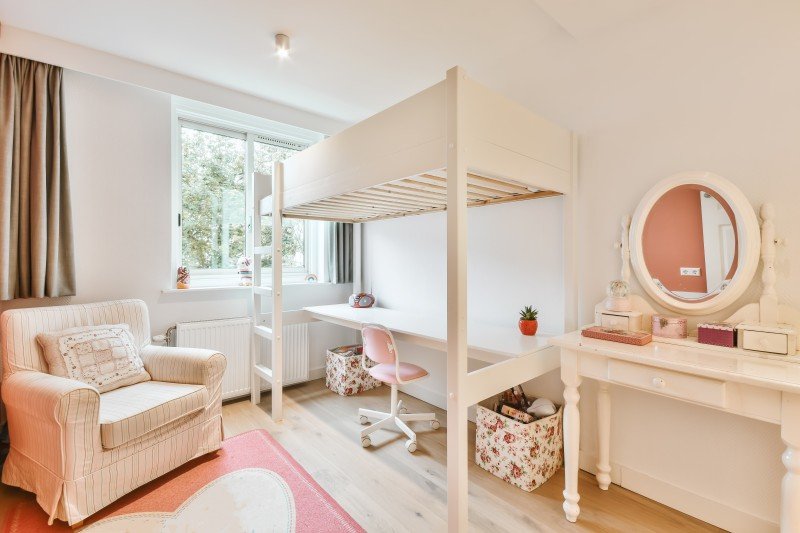
Bunk Beds House
Add a review FollowOverview
-
Founded Date July 6, 1916
-
Posted Jobs 0
-
Viewed 19
Company Description
Don’t Buy Into These “Trends” Concerning UK Bunk Beds
Understanding UK Bunk Beds: A Comprehensive Guide
Bunk beds have actually ended up being a popular choice for many families across the United Kingdom. They provide an efficient service for saving space, accommodating several sleepers, and adding an aspect of enjoyable to a kid’s room. With different styles, materials, and security functions offered, choosing the ideal bunk bed can be intimidating. This short article aims to offer a thorough appearance into UK bunk beds, covering their types, benefits, security requirements, and buying ideas.
The Types of Bunk Beds
When it pertains to bunk beds, the choices are practically limitless. The main categories consist of:

1. Standard Bunk Beds
These are the classic style, including two beds stacked one on top of the other. Standard bunk beds are best for brother or sisters sharing a room or sleepovers.
2. Loft Beds
Loft beds rise beds without a lower bunk. This style offers adequate space below for a research study area, extra storage, or play space for kids bunk beds.
3. L-Shaped Bunk Beds
These beds have an L-shape style, permitting them to suit corners or odd spaces in a space. They are often ideal for larger rooms and offer flexibility in sleeping plans.
4. Triple Bunk Beds
Designed for bigger households, triple bunk beds accommodate 3 sleeping spaces. These beds supply vertical sleeping arrangements and can be an exceptional choice for optimizing space capacity.
5. Futon Bunk Beds
These flexible beds combine a basic upper bunk with a futon or couch listed below. This style can be utilized for sleeping or seating, making it a multifunctional option for smaller areas.
6. Bunk Beds with Storage
Some modern bunk beds come geared up with drawers or shelving, offering extra storage space for clothes, toys, or books. This feature is particularly advantageous in rooms that require arranged storage options.
Advantages of Bunk Beds
bunk bed cheap beds offer numerous advantages, making them a desirable choice for lots of households:
-
Space-Saving: Bunk beds use vertical space, permitting more open flooring location in smaller rooms.
-
Affordability: Sharing a room and buying one bunk bed can be more economical than purchasing separate beds for multiple children.
-
Fun Factor: Bunk beds provide a sense of experience and excitement, especially for children, making bedtime more pleasurable.
-
Versatile Layouts: With different styles readily available, bunk beds can fit any space layout, making sure style and performance.
-
Storage Options: Many designs incorporate extra storage solutions, helping to keep spaces neat.
| Advantages of Bunk Beds | Description |
|---|---|
| Space-Saving | Makes use of vertical space to free up flooring location. |
| Cost | More cost-efficient for households with several kids. |
| Fun Factor | Includes excitement to bedtime and promotes creative play. |
| Versatile Layouts | Combinations can fit different space setups. |
| Storage Options | Integrated drawers and racks help keep products arranged. |
Safety Standards
When choosing good bunk beds beds, safety must be a top concern, especially for children. The UK has actually established policies to guarantee that bunk beds meet particular safety requirements. For example:
-
Guardrails: Beds should have guardrails on both sides of the top bunk to prevent accidental falls.
-
Mattress Size: Beds ought to work with an appropriate mattress size to ensure safe usage. The bed mattress should not surpass the top of the guardrails.
-
Durable Construction: childrens bunk beds uk beds should be made from durable materials to endure routine use, ensuring stability and longevity.
-
Weight Limit: Every bunk bed for adults bed has a weight limit which should be complied with for security factors.
-
Assembly Instructions: Proper assembly is crucial; follow the maker’s standards closely to guarantee structural stability.
Buying Tips
When set to purchase a bunk bed, consider the following points:
-
Room Size: Measure the space dimensions to guarantee the selected bed fits conveniently.
-
Height Consideration: Ensure there suffices room above the leading bunk to prevent bumps on the ceiling.
-
Material Choice: Look for sturdy products with a quality surface. Wood and metal are popular alternatives, with each offering various aesthetic appeals and resilience.
-
Safety Features: Verify that the bed meets safety requirements and has appropriate guardrails and a strong ladder.
-
Style Compatibility: Select a style that complements the existing decor of the room.
-
Budget plan: Set a spending plan before exploring your options, as bunk beds can span a broad price variety.
Regularly Asked Questions (FAQs)
1. What age is suitable for a top bunk?
Normally, kids aged six and older can sleep on the top bunk, but always check particular producer guidelines for age suggestions.
2. How do I maintain my bunk bed?
Routinely look for any loose screws or parts, tidy the bed regularly, and guarantee it stays steady.
3. Can bunk beds accommodate adults?
While some bunk beds are developed for heavier weights, the majority are mostly intended for children. Inspect the weight restricts if thinking about adult use.
4. Are bunk beds easy to assemble?
Many bunk beds include in-depth assembly guidelines and all essential tools. Nevertheless, some styles may require professional assembly.

5. Can I use a thicker mattress on a bunk bed?
It is important to follow the manufacturer’s standards concerning mattress density to guarantee safety and compliance with the guardrails.
Bunk beds are a versatile and useful alternative for households seeking to make the most of space and produce a fun sleeping environment for their children. With a myriad of designs readily available, it’s crucial to think about the specific requirements of the household while prioritizing safety and convenience. By understanding the various types, advantages, and important considerations surrounding bunk beds, moms and dads can make informed choices that will improve their children’s living areas.
